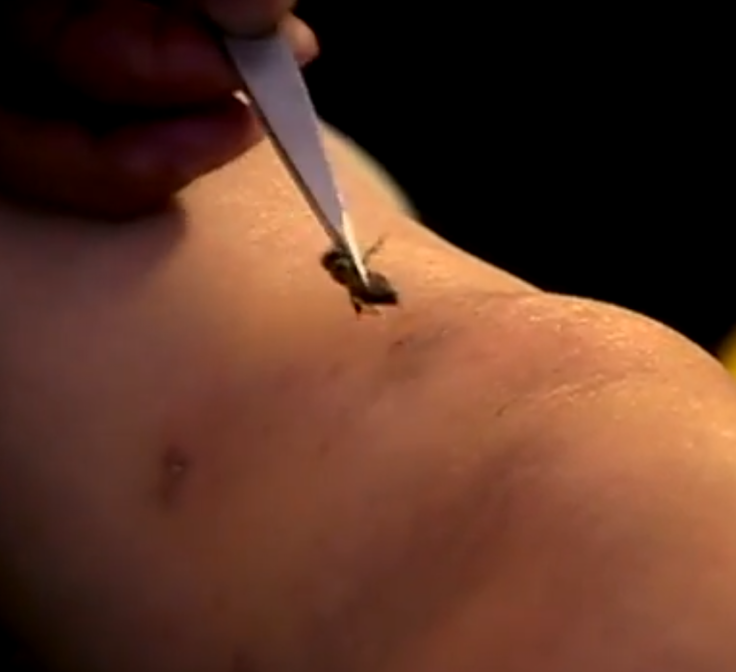Bee Sting Therapy Buzzing In China, More Than 27,000 People Treated With Bee Venom

China is buzzing about using bee stings.
More than 27,000 people in China have received dozens of punctures from bee stings in acupuncture clinics to ward off diseases like arthritis and cancer, Agence France-Press reports.
"We hold the bee, put it on a point on the body, hold its head, and pinch it until the sting needle emerges," bee acupuncturist Wang Menglin, who has a clinic in Beijing, said.
He adds that the bee venom can be used to treat the "most common diseases of the lower limbs," and can be used as a preventative measure. But some websites say some of the technique’s claims are “a red flag for quackery.”
The American Cancer Society and the National Multiple Sclerosis Society have issued statements suggesting that people be cautious in regard to the Chinese technique. "Relying on this type of treatment alone and avoiding or delaying conventional medical care for cancer may have serious health consequences," the American Cancer Society said in a statement about bee sting therapy.
A Filipino bee farmer, Joel Magsaysay, said stings helped heal him from damaged nerves caused by a stroke.
"One protein causes pain -- that's good because that forces your synapses to connect, and hardwires again your nervous system up to your brain. It has another protein that expands your veins and arteries so that your blood pressure drops, and circulation is enhanced in the bee sting site. And all the other proteins excite your immune system so it's boosted," Magsaysay told WFMY.
Bee sting therapy remains one of the many traditional treatments in Chinese medicine and continues to receive financial support from the government. The industry has also proven to be lucrative, producing $84 billion worth of goods amounting to 31 percent of the country’s total medicine output, according to the National Bureau of Statistics.
Despite the lack of scientific evidence, some patients continue to support the technique’s benefits.
Retired air force colonel Clyde Valencia, who had a stroke over a decade ago, said he has tried Western medicine therapies for his paralysis but has decided to turn to alternative treatments like bee venom therapy.
"After one hour, I feel slight improvement when walking," he said.
© Copyright IBTimes 2024. All rights reserved.





















